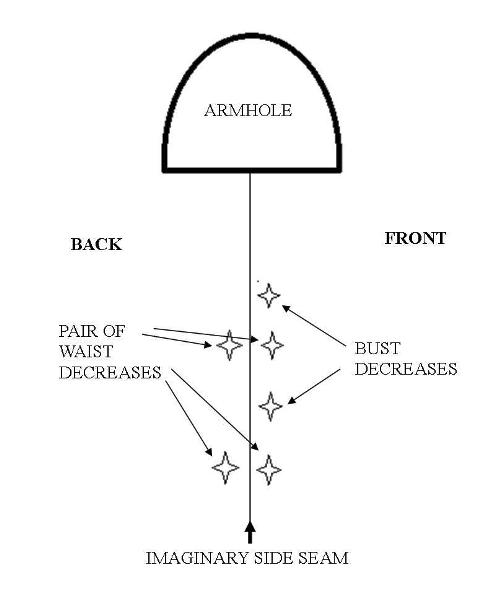My theory is that the front of our sweaters should be wider than the backs for two obvious reasons.
We don’t need it to be wider everywhere. Just where we need it. (Do I need Bust Darts?)

This is a refined version of the Knit for Fit: Top Down Easy Bust Shaping and what I actually do for many of my sweaters. The Family Crew Neck and the Any Gauge Raglan Pullover have the instructions to do this in the Modification Pages.
As I approach the bottom of the yoke, I work an extra increase beside the raglan increase ON THE FRONTS ONLY. Now I have added an extra stitch on both sides of the front. (The black slashes are where the extra increases are.) I usually do this for several rows or rounds.
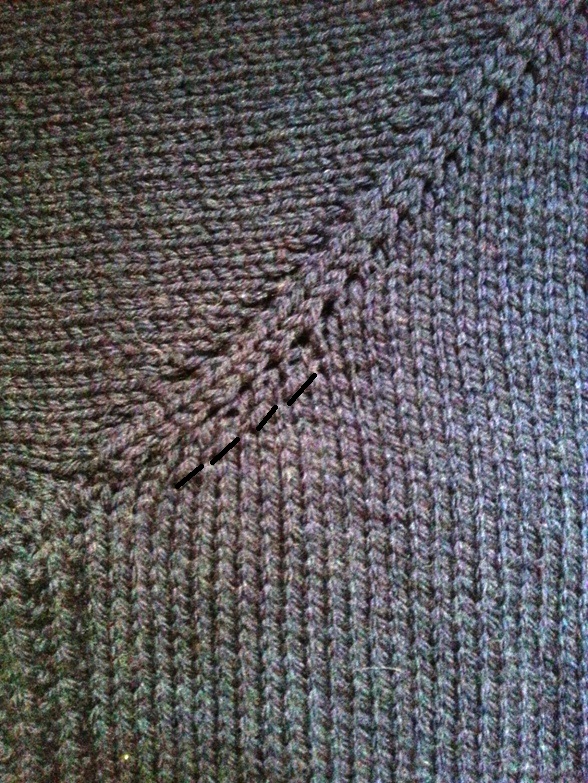
Here’s a more obvious example on a sweater I’m knitting now. In Aran weight yarn (heavy worsted) you can see the increases clearly. I did quite a few because this is a cardigan and I didn’t want the dreaded button pull on the front.
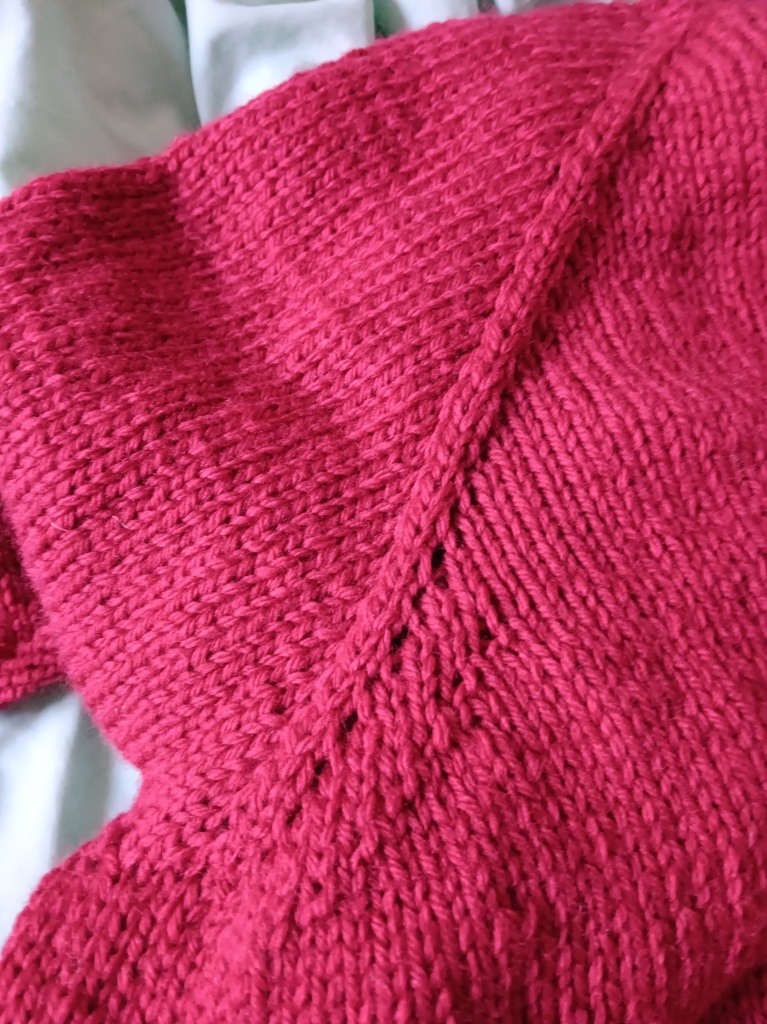
The change from the last post is that at the same time I was working these extra increases on the fronts, I STOP INCREASING ON THE BACK. Can you do that? Just stop increasing? Yes you can.

This is all done very close to the bottom of your yoke. You get a little straight line on the back, very near the underarm, so no one can see it.
- The bonus is that my back is now 2+” narrower than the front of my sweater.
2. The second bonus of working the extra increases beside the raglan increases on the front and not increasing on the back is that you are still increasing 8 stitches on every increase row or round. It doesn’t mess with the number of stitches you need at the bottom of the yoke.
You do have to work decreases down the sides of the front body between the largest point of your bust and your waist to take all or some of these extra front stitches away. Then begin your hip shaping.
Yes, shaping your sweaters does have lots of parts to it. Try one step at a time. You are the boss of your knitting.
Cheers, Deb
Any Gauge and Gauge-Free patterns by Deb
Deb.gemmell on instagram
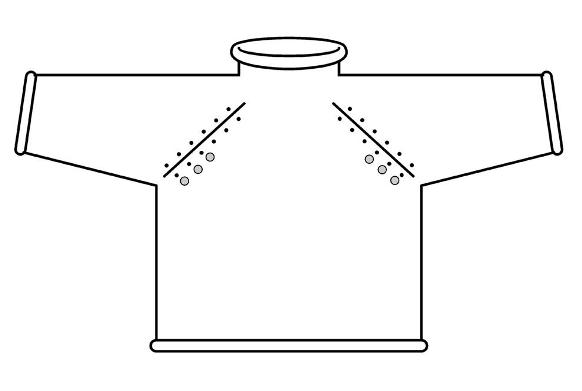


 Would the extra increases show? Not really. You can put them in just before the underarm. Can you see them?
Would the extra increases show? Not really. You can put them in just before the underarm. Can you see them?
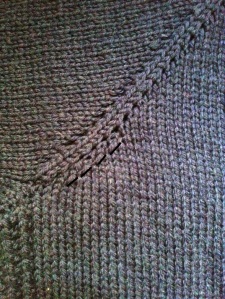







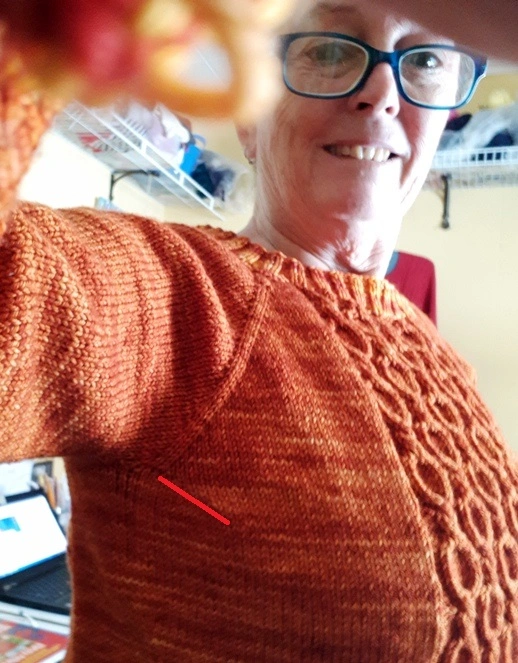
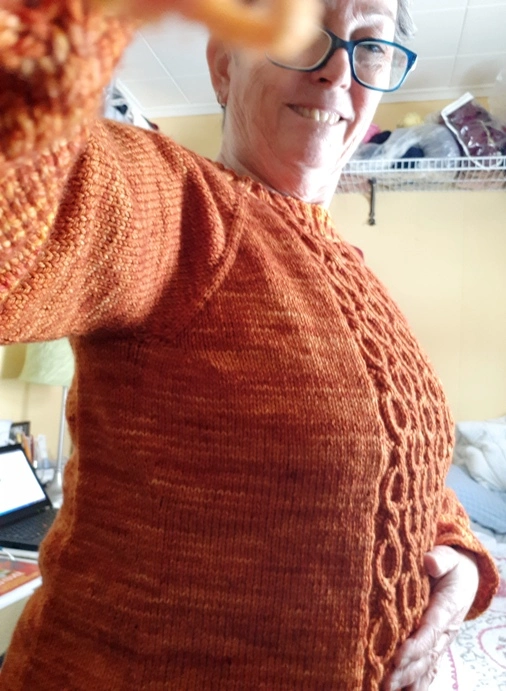


 Now as a confirmed cardigan buttoner I add extra Front stitches for
Now as a confirmed cardigan buttoner I add extra Front stitches for 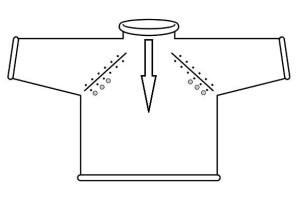 But now what? What do you do with those extra stitches below the bust?
But now what? What do you do with those extra stitches below the bust?

